It’s time for the game to finally, actually begin!
You Have Done Well to Come!
After you name your characters, the very first line of text in the English translation says, “Welcome to the World of MOTHER 3”. But the original line was already in English as, “Welcome to MOTHER 3 world”.
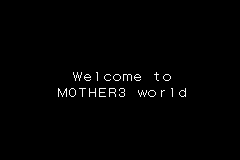 |  |
People often ask why I changed this line since it was already in English There are two reasons.
First, this text was used on lots of merchandise and official sites, but was very often accompanied with “Youkoso, MOTHER 3 no sekai e” . Which is basically the same thing, but in proper Japanese grammar. So you could say I’m translating it as the Japanese text intended.
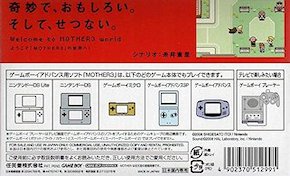 | 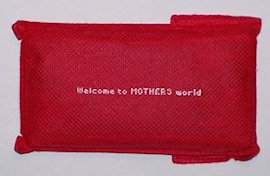 |
Second, if the very, very first line of text was such strange “Engrish”, players would definitely not expect much from the rest of the text in the game!
Nowhere Name
A common question is why I called the place “Nowhere Islands” instead of just “Nowhere Island”. I actually had it named “Nowhere Island” up until about a month before the patch was released, but in the back of my mind it was always bugging me.
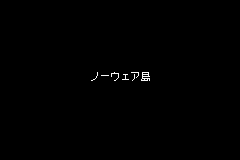 |  |
Eventually, I looked further into the issue and realized it was bugging me because the Japanese instruction booklet had already labeled it “Nowhere Islands” in plain English (see here).
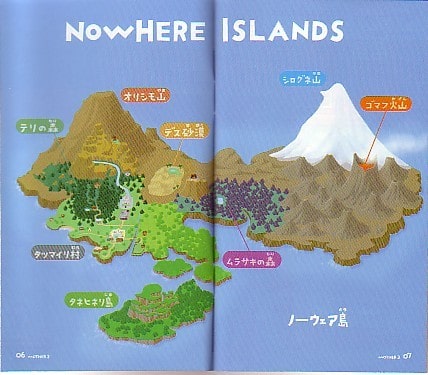 |
I also found that the official Japanese site called it “Nowhere Islands” as well.
Essentially, it’s plural because there really are other islands besides just the main one you’re on most of the time, as can be clearly seen on these maps. There was even supposed to be a New Pork Island in an early version of the game. So it’s kind of like how you can use “Hawaiian islands” to refer to the whole group of islands, or you can make it singular to refer to the specific main one. The plural version makes more sense in this intro because we’re shown a full view of all the islands just seconds before we see the name of the whole place.
What’s a Tazmily?
Japanese has multiple writing systems, but MOTHER games tend to only use what’s called “kana”. This is good in some ways and bad in others. In the case of Tazmily village, its kana transliterates directly to “Tatsumairi”, and this is in fact what I called it in some of my walkthroughs before I started on the MOTHER 3 fan translation.
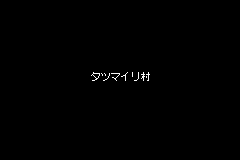 | 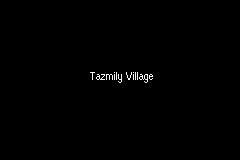 |
Sometimes Japanese names have meaning to them if you look at how they’re written in kanji – but since MOTHER games don’t use kanji much, we can’t be 100% sure what the meaning behind “Tatsumairi” might be. It’s definitely possible that “tatsu” here could mean “dragon”. “mairi” could be anything, and you can probably come up with anything you want. One thought is that it could mean “worship”, but I like to play the “ateji” game, so I would say that maybe “mai” could be the kanji for “buried” and “ri” could be the kanji for “village”.
Before the project merge, the name “Dragonstep Village” had even been considered for the translation. But without Itoi’s word, it’s all just speculation, and it could very well have no meaning at all. And his answer would almost certainly be, “It’s whatever you want it to be.” anyway.
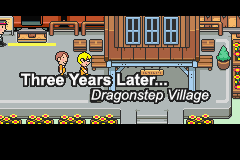 |
What’s interesting is that the village had an official English spelling even in the Nintendo 64 days. It’s not very well-known, and only crazy fans would remember, but you can see proof of the village’s spelling on Nintendo’s MOTHER 3 site back in like 1999. “Tazmily” also appeared in this really old EarthBound 64 preview.
 |
Because of this past, official precedent, I went with Tazmily for the translation. What’s funny is that NOA translated it as “Tazumili” in Smash Bros. Brawl, but Nintendo of Europe had caught the mistake in time, so the European version has it as Tazmily.
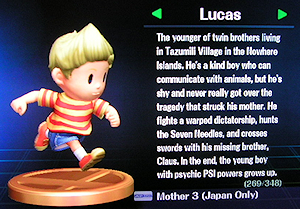 |  |
| Smash Bros. Brawl (North American version) | Smash Bros. Brawl (European version) |
Forest of Confusion
Here we see that the big forest area is called “teri no mori” in Japanese.
Because “teri” was in katakana, it seemed like it was probably meant to be a name or something like that, along the lines of “Telly” or “Teri”. In fact, I think I called it one of the early walkthroughs I made for people who couldn’t read Japanese.
But after seeing how other things are written in the Japanese script, it was most likely the case that this wasn’t a foreign name or anything, but simply the Japanese word “teri”, which means “sunshine”. It wasn’t written in kanji because when it’s referenced in the main script, kanji wouldn’t be available. A similar situation happens with a few other location names in the game later on, as already explained above.
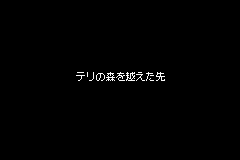 | 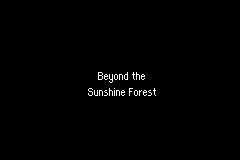 |
Onomatopoeia or Bust
Most of the time, onomatopoeia (sound effect words) graphics in Japanese games are written in Japanese. This only makes sense. Here’s an example from EarthBound, in fact:
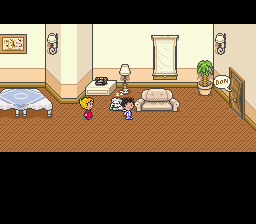 | 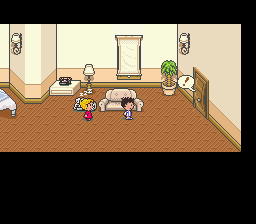 |
| MOTHER 2 | EarthBound |
There are rare occasions where Japanese creators will use English onomatopoeia though, which is a nice relief because it means not having to translate and reprogram stuff. Luckily for us, many such sound effect graphics in MOTHER 3 were already in English!
 | 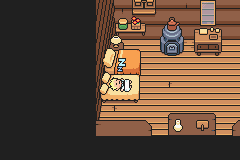 |
Of course, when we started helping people translate the game into other languages, the issue of messing with these graphics came up. Since we didn’t write code or tools to deal with them, it meant a lot of extra, unexpected work on our part. Oops.
Mebbe I’ll Write Like Ya Talk
So one of the neat things about the MOTHER series is that the Japanese text is written the way people talk in real life. This might sound kind of an obvious thing to point out, but it’s important, because it’s something Shigesato Itoi excels at but other writers tend to have a hard time with.
In fact, when working on the previous two games, Itoi didn’t know how to type, so he dictated every line in the game to someone else who would type in the lines for him. He’d often rephrase lines over and over until he was happy with them – and sometimes he’d even throw out whole blocks of text later on if he wasn’t happy with them. So it’s always been important that the text in the MOTHER games sounds like actual speaking.
As a side note, the way people speak in Japanese is often very different from the sort of “proper Japanese” you learn in the classroom, where grammar must always be used in certain ways and this has to be said in a specific such and such way. That’s why when I first played MOTHER 2 before visiting Japan it was really hard to understand anything at all!
All this is to say that I took a similar approach when working on the MOTHER 3 translation. I wanted the text to sound less like stiff, emotionless “translation-ese” and more like it was something that was actually being said out loud. In fact, I did say most everything out loud myself – by coincidence this is a habit I picked up during my own professional translation work, particularly working with subtitle writing and timing.
Of course, when it comes to writing I don’t even begin to compare to Shigesato Itoi, so the best I could do was act as transparent of a window as possible and hope the content of his text would shine through. Minus a few things, I think it turned out okay in the end.
Also, similar to how it works in Japanese, I didn’t force myself stick to “proper English”. We see that in like the first line of the game, where I use “How long’re you gonna sleep?” rather than “How long are you going to sleep?”
 |  |
It might seem trivial, but trust me, I probably got at least a dozen typo reports about this one line alone!
There are many, many more instances of this sort of thing – purposely weird spelling or purposely incorrect grammar. Even though I was inundated with reports about many of them, I’m glad that fans went out of their way to get in touch with me; it’s so easy to just complain and do nothing to fix the problem. Plus, these reports also helped us fix legitimate mistakes. So thanks, everyone!
Look Around You
One neat thing about working on the translation was that I was able to see all the text in the script. There’s a lot of stuff in there that I wouldn’t have known about otherwise; maybe I’ll point out some instances here and there.
For instance, there’s all sorts of stuff you can check inside the cabin here in the prologue.
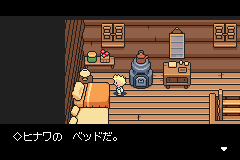 | 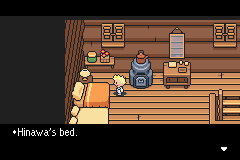 |
If you need an excuse to play through MOTHER 3 again, here you go! Check around everywhere and see what stuff you’ve missed throughout the game!
Mothers and their Scooters
In classic MOTHER fashion (okay, MOTHER 2 fashion), before you can go outside you have to change out of your pajamas.
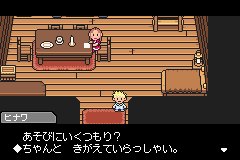 | 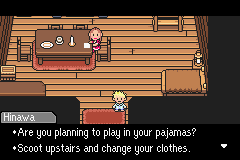 |
I didn’t think about it when I translated this line, but now that I look at it, I think I was subconsciously channeling EarthBound’s phrasing!
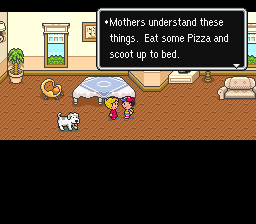 |
For reference, the phrase “scoot up” is pretty unusual to use in a straight translation, hence my surprise here.
It seems there are actually a few more instances of this elsewhere in the game where I made the same translation choices that EarthBound’s localizers did. It was probably because I was so familiar with EarthBound that I did it without even thinking.
Never Say Die
Having access to all of the text in the game also helped me find tricks and secret actions that I wouldn’t have known about before. For example, dashing into your mom here will cause her to give you some Nut Bread.
 | 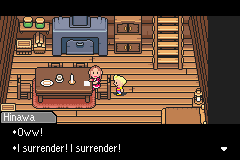 |
Chicken Guys
Already Itoi’s busting out his weird writing sense. Here he has a chicken talking with chicken onomatopoeia, and then in its human language translation the chicken speaks normally until the end, when it turns out that the final onomatopoeia was actually a piece of a non-standard Japanese dialect.
It’s a bit tough to explain if you don’t know Japanese, but it’s basically grammatical word play that doesn’t work in translation because English grammar is so different. I didn’t want to “force” a joke in its place, though. It would’ve been way too easy to go overboard with it when it’s actually just a tiny little thing in the original text.
 |  |
A Worrying Pig
I never liked the way I translated these pigs. In retrospect I should’ve had the first pig say, “The things the pig next to me says worries me/bothers me.”
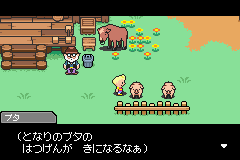 |  |
Memories of the Frog
Similarly, the save frog outside of the cabin has some cool stuff that has an almost poetic-quality to it in Japanese that just sort of bumbles along in my English translation. I’ve never been fond of my translation here, but I’ve seen people quote it and stuff, so it’s likely just a case of me being overly-super-duper-picky of my own stuff that outsiders would never know about. This is a pretty common thing for translators to have (as well as artists, musicians, etc.) and it’s just one of the things that makes it hard for me to view the translation from the same eyes as everyone else. I’m guessing it’s the same way for most people in any creative field, actually.
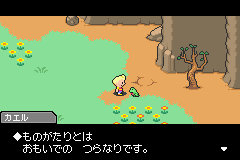 | 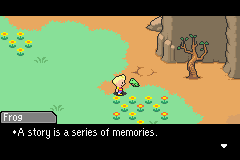 |
The Sound of the Mountain
As mentioned before, one of my goals was to try to make the game’s translation similar to what an official localization might’ve been, so when it came to the location names I tried to go with this mindset.
So, near the end of the project, while working on the map name translations, I noticed that there were a lot of super-Japanese-sounding names; names that I was sure Nintendo of America would’ve changed.
In this instance, the mountain area where the prologue takes place is called “Mt. Orishimo” in Japanese. I changed it to “Mt. Oriander” for the English localization.
Neither has any actual meaning as far as I know – but every so often I would get typo reports saying that my translation should’ve been “Oleander” rather than “Oriander”. So just to be clear, the name was my own creation – not a typo or a mistranslation. In fact, I kept gravitating toward “Oleander” while trying to come up with a name, but I didn’t want it to be an actual word. So I replaced the “le” with an “ri” and voila!
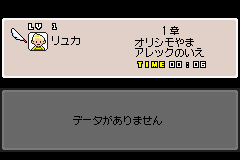 | 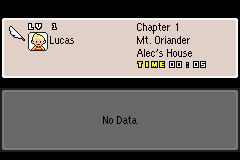 |
There’s another side of me that says I should’ve just kept all the names the same. In fact, I used this approach when doing my MOTHER 1+2 translation later on – I used all the original town names, for example.
So there was always this battle between, “What would an official localization have been like?” and, “What should the purest translation be like?” It’s a very tough balancing act, and this is something that a lot of fan translations can get really wrong. Glimpses of my own struggle with it can be seen throughout the translation if you pay close attention.
Button Attention
I’ve done a few small professional game translations, one of which was a Game Boy Advance game. While working on it I learned the details of Nintendo’s “lot check”, which is basically a battery of rules you have to adhere to. To try to make the MOTHER 3 fan translation just a little closer to an authentic localization, I tried to follow the rules as much as possible.
For instance, one of those rules for GBA games is that you can’t just say something like, “Press B” – you have to call it the “B Button”, with that exact capitalization. Calling it the “B button” or “B-Button” wouldn’t be allowed.
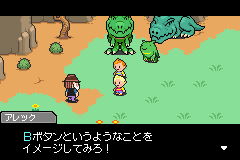 |  |
I realized pretty much no one would notice this attention to detail, but it’s an example of where my experience as a fan translator and my experience as a professional translator came together in a demonstrable way.
You are the Victor!
When MOTHER 2 was localized into EarthBound, the “YOU WIN!” message was changed to say “YOU WON!” The text was also made a little less bold-looking.
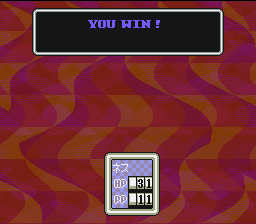 | 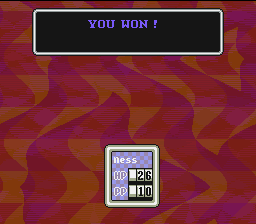 |
| MOTHER2 | EarthBound |
So when it came time for us to work on MOTHER 3, it only felt natural to follow suit:
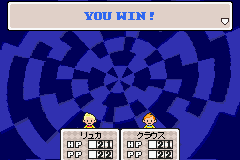 |  |
I’m still not quite sure why the text was ever changed to begin with, but I do at least think it looks nicer being non-bold-looking.
Breaking the Fifth Wall
Many people who play MOTHER 3 are quickly confused and ask, “Wait, why isn’t there any money? Why can’t I buy or sell anything?” at the start of the game.
While working on this part of the translation, I couldn’t help but wonder if Alec’s line here about how it’s free to use frogs would help add to that confusion. I know he was breaking the fourth wall and everything, but if it were up to me I wouldn’t have mentioned money at all yet.
As a translator, I’ve often encountered text that I thought was flawed. The question then becomes – do you change it, add more to it, or just translate it as-is? It’s one of those dilemmas every translator has to face at some point probably. In this case, it didn’t seem like that big of a deal, so I left it as-is.
 | 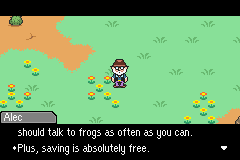 |
Letter of Dread
At the end of the prologue, we see what Hinawa wrote in her letter to Flint.
First, this text belongs to what we called “Block 0” during the translation project. Block 0 is where a bunch of random text was stored by the programmers. Sadly for us, the programmers also programmed Block 0 stuff very inconveniently, so it was a major headache for us all throughout the project.
As a result, we had to spend a ton of time on getting this letter and other scrolling text scenes to work properly. One issue we had to overcome was the limit of 16 or so letters per line. That was a tough one. Another issue was that while the English text scrolled, all the sprites in the background would randomly flicker for reasons unknown.
While wrestling with Block 0’s programming, many interesting bugs occurred. One resulted in a very different letter from Hinawa!
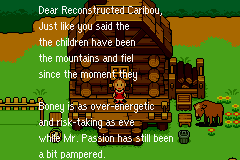 |
Block 0 caused many other problems that I’ll probably discuss later. Luckily, we managed to fix it all in time, but Block 0 will always be the third strongest foe of the MOTHER 3 project!
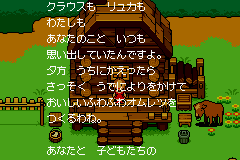 | 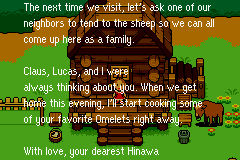 |
Every time I watch a video of MOTHER 3, this is the one part I have to skip. I really, really don’t like the way the translated letter is phrased, it feels so lifeless and awkward. I realize that’s just me being picky… but translators need to be picky.
Anyway, some interesting rephrasing was needed at the very end of the letter, where Hinawa literally says, “From the Hinawa of you and the children”. I took some creative liberty and changed it to say “With love, your dearest Hinawa”. I think this one was a necessary change. The general intent and feel are conveyed, at least.


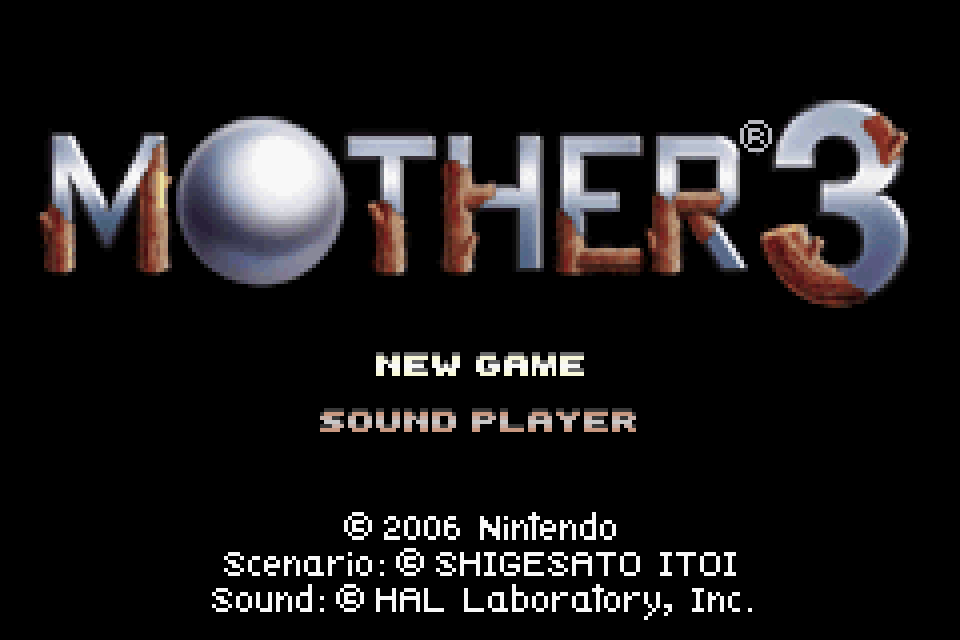
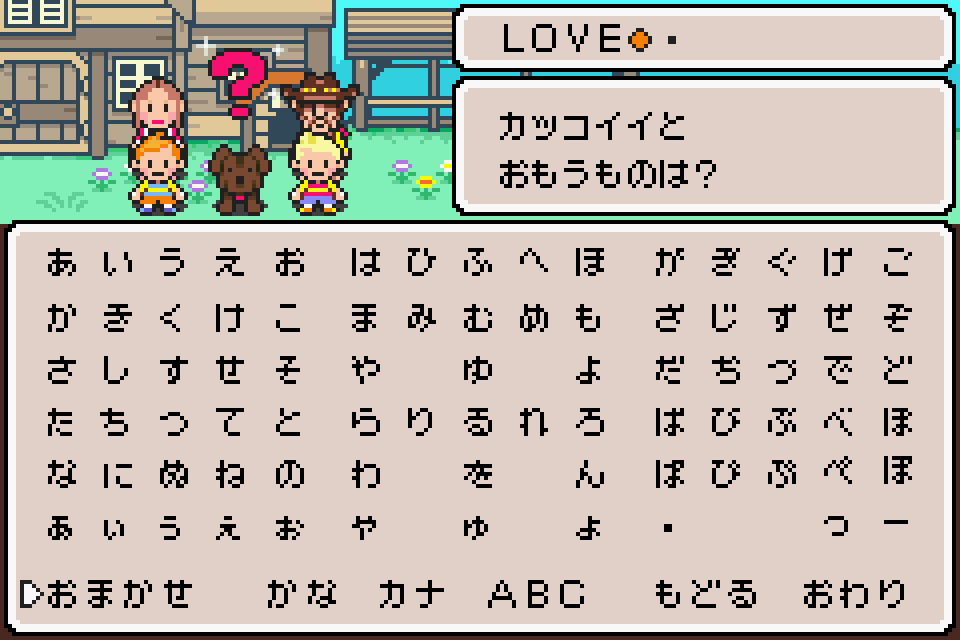
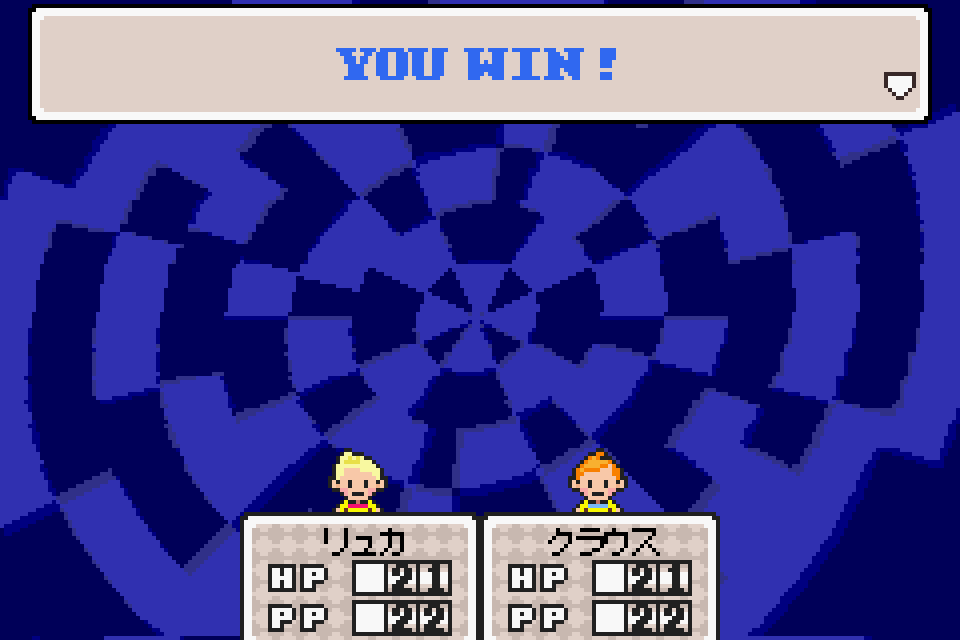
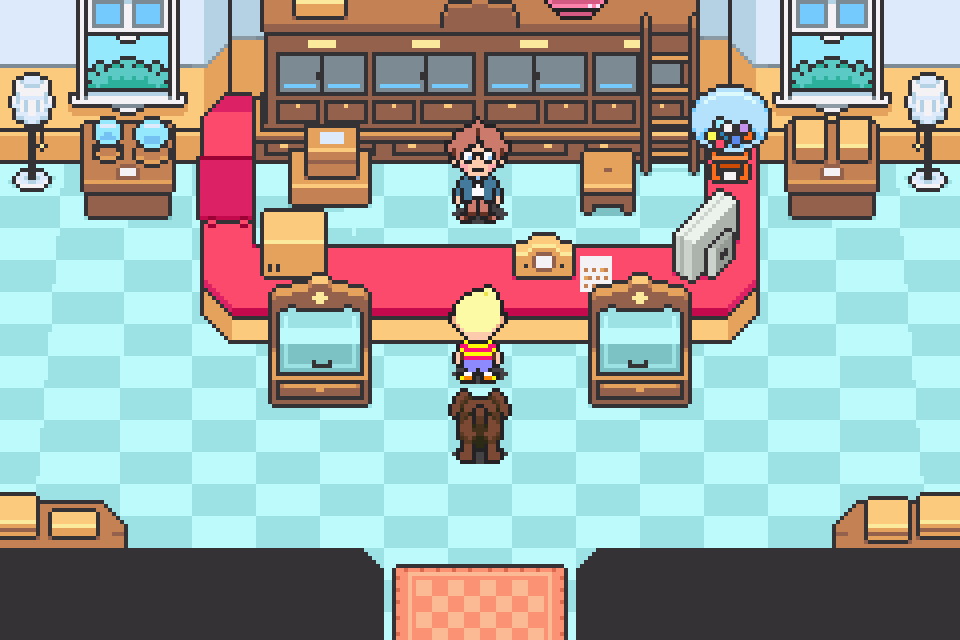
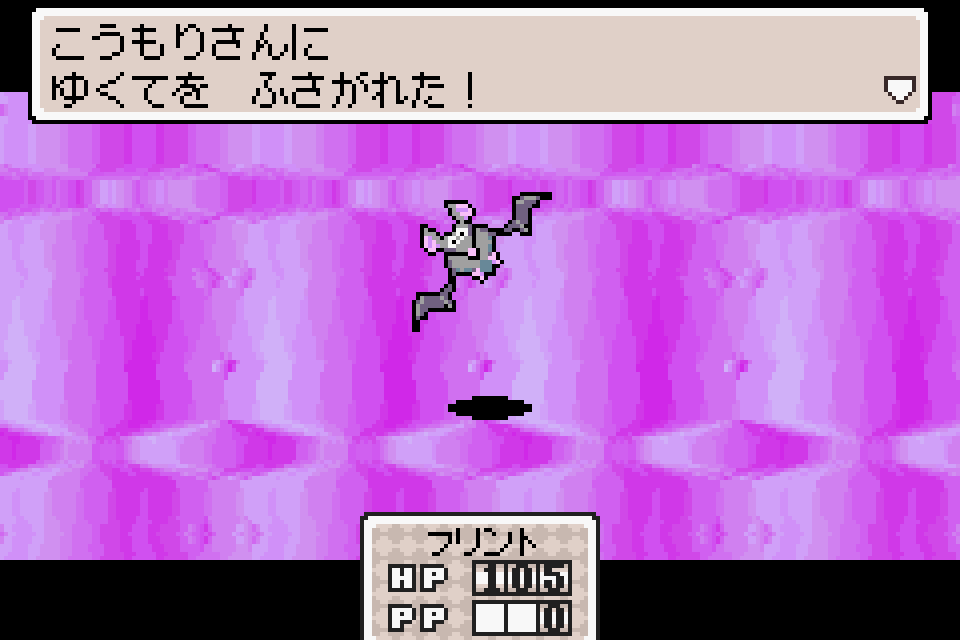
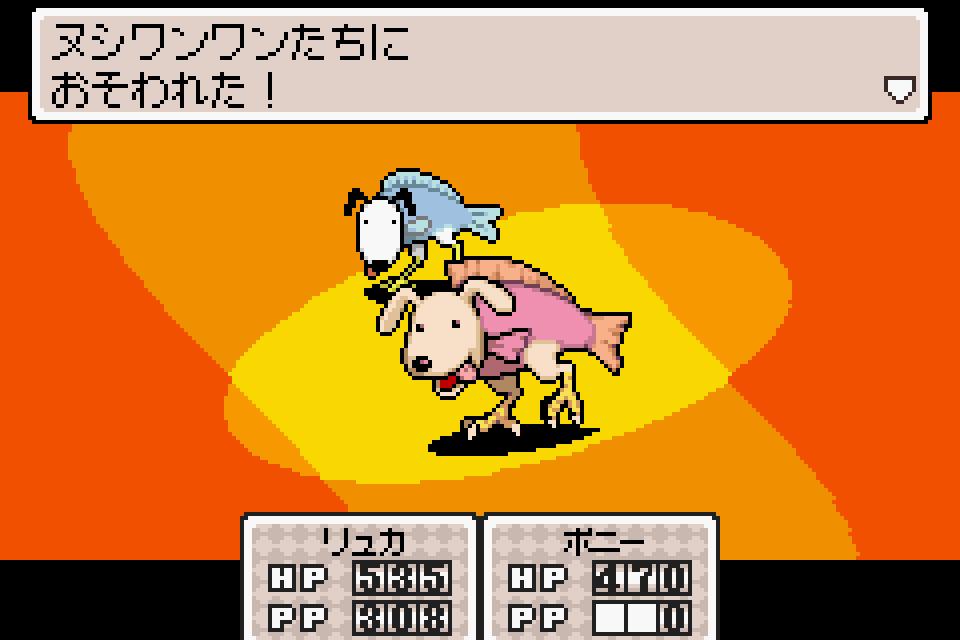
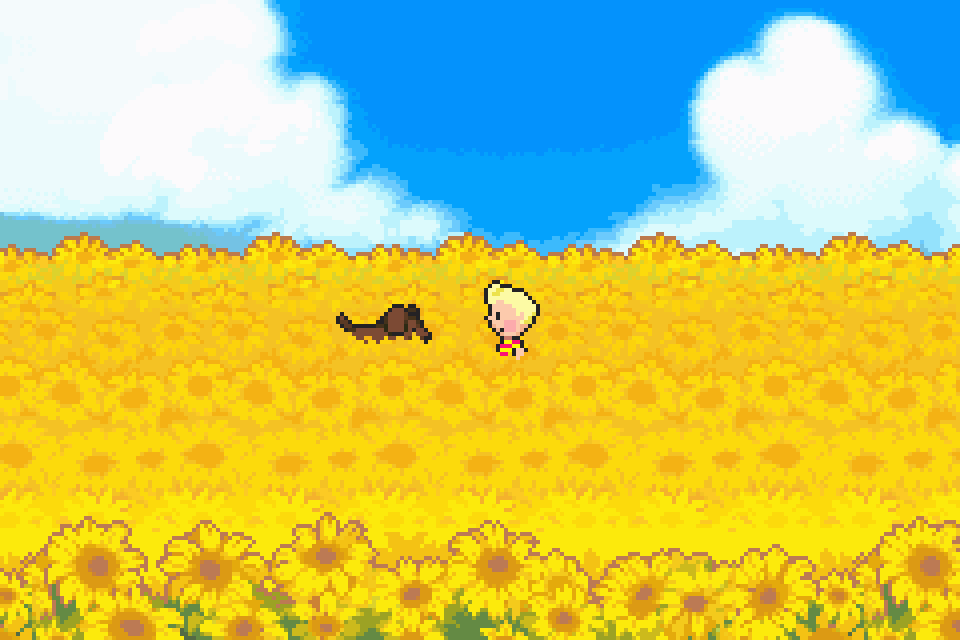
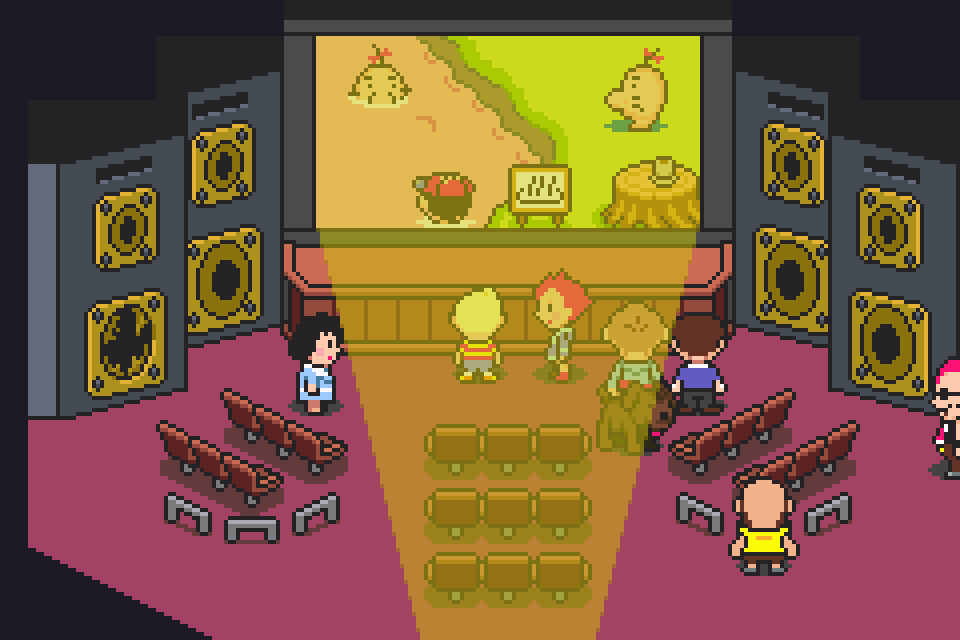
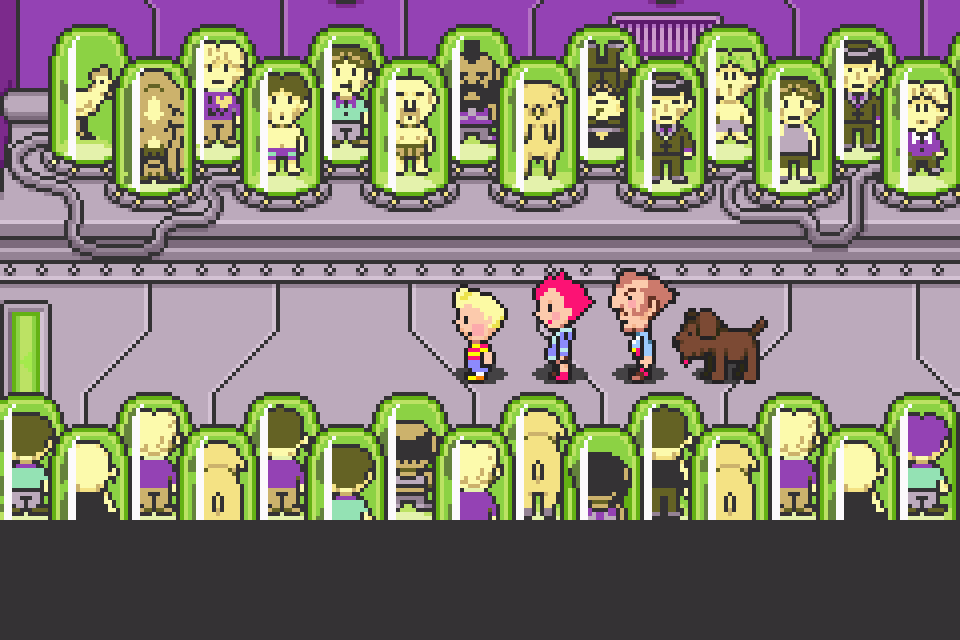
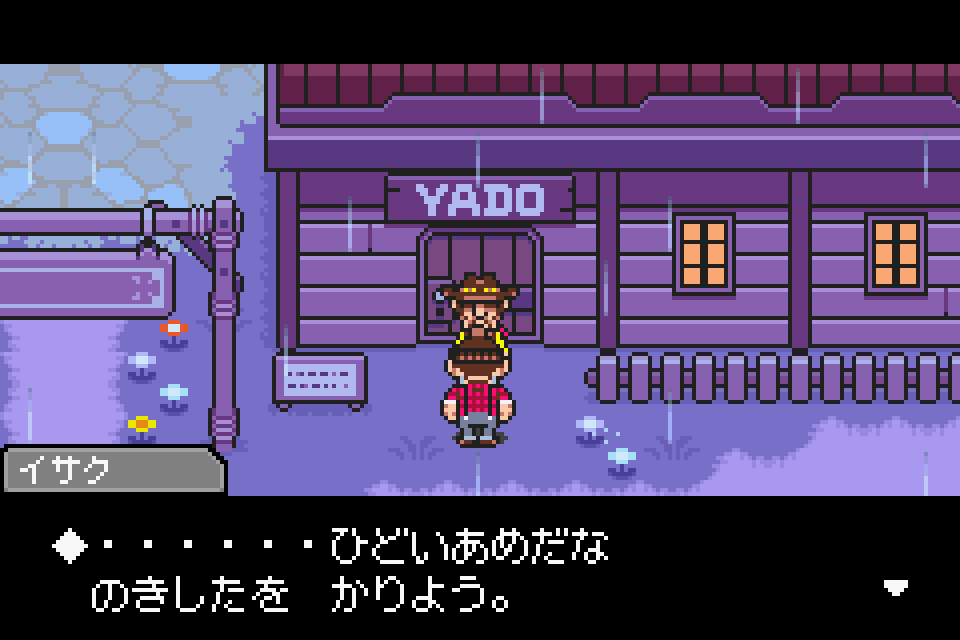
![Passport to MOTHER 2 [Learn Japanese!] Passport to MOTHER 2 [Learn Japanese!]](https://legendsoflocalization.com/wp-content/uploads/2018/05/pp-m2.jpg)
No Comments